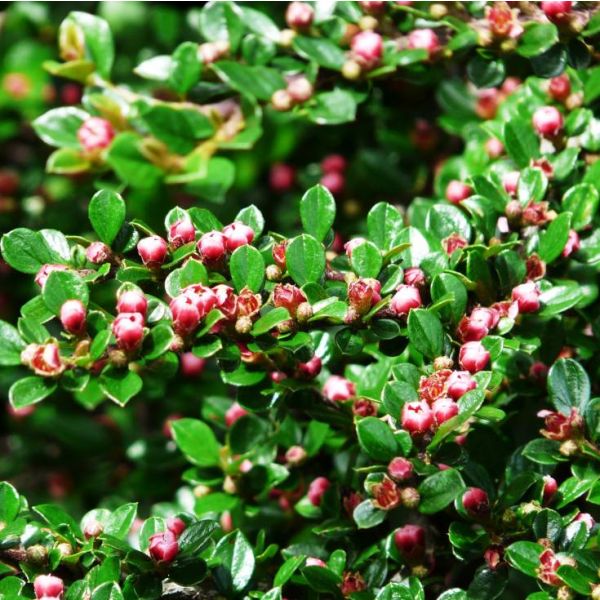Graines Cotoneaster Horizontalis (Cotoneaster horizontal ou rampant)
Graines Cotoneaster Horizontalis (Cotoneaster horizontal ou rampant)
Célèbre pour ses vertus ornementales et sa facilité de culture.
Availability: En stock
SKU
Cotoneaster Horizontalis
Cotoneaster Horizontalis est un arbuste semi-persistant à feuilles caduques originaire de l'Ouest de la Chine (Sichuan et Gansu). Il est célèbre pour ses vertus ornementales et sa facilité de culture. Cotoneaster Horizontalis pousse jusqu’à 1 mètre de haut et 1,5 mètres de large.
Cotoneaster Horizontalis possède des feuilles brillantes qui deviennent orange et rouges en automne. Cotoneaster Horizontalis fleurit à la fin du printemps. Ses belles fleurs sont blanches ou roses parfumées. Elles sont suivies par des baies rouges, pourpres ou noires qui attirent les oiseaux. Cotoneaster Horizontalis peut devenir envahissant. Vous devrez retirer un ou deux plants indésirables chaque année mais dans l'ensemble, son habitude d'auto- ensemencement est certainement une vertu.
Les fruits sont toxiques pour les humains.
Cotoneaster Horizontalis a besoin de plein soleil et d’un sol bien drainé, d’un sol acide, alcalin ou neutre ou d’un sol argileux , sablonneux ou de limon.
Zone de rusticité : 5-7
| Nom commun | Cotoneaster |
|---|---|
| Famille | Rosaceae |
| Genre | Cotoneaster |
| Espèce | Cotoneaster horizontalis |
| Germination | Cotoneaster seeds have a deep dormancy within them, this requires a degree of patience to overcome and it is usually quite easy to get high levels of germination if the correct procedures are followed. 1 Prepare the cotoneaster seeds in early spring for summer germination. Rub each seed lightly with a nail file softening the hull. Store the seeds in a plastic bag filled with moist sand inside the refrigerator for three months to cold-stratify them. 2 Sow the cotoneaster seeds in 5-inch plastic pots filled with sterile loam. Sow two seeds in each pot to a depth of one-tenth inch. Sprinkling sand across the soil?s surface helps slow the evaporation rate. 3 Place the potted cotoneaster seeds on a propagation mat near a source of very bright light. Set the temperature on the propagation mat to 77 degrees Fahrenheit for nine hours each day. Adjust the temperature to 55 F for the remainder of the day. 4 Water the cotoneaster seeds as often as necessary maintaining moisture in the top one-half inch of soil at all times. Add the water very slowly when irrigating keeps from disturbing the seed. 5 Watch for germination in 25 days. Remove the weaker of the two cotoneaster seedlings from each pot if both germinate. Wait until the seedlings reach 1 inch in height before thinning. 6 Move the cotoneaster seedlings to a sheltered spot outdoors with limited exposure to strong, direct sunlight. Continue watering, but allow the soil?s surface to dry slightly between waterings. 7 Slowly acclimate the cotoneaster seedlings to strong sunlight in the course of one week until they withstand full sun for five hours without wilting. 8 Transplant the cotoneaster seedlings into a sunny bed at least 75 days before the first autumn frost. Space the seedlings 10 feet apart. Mulching heavily around them protects their developing roots. |
| Price View | Tranche de prix |

